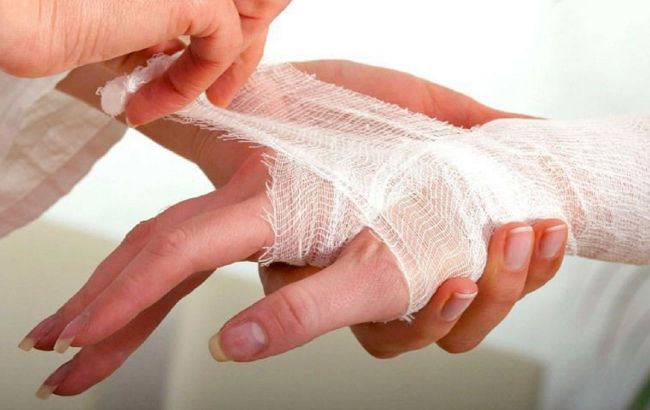Don't treat wounds with iodine: Doctors' advice
 Should wounds be treated with iodine (photo: freepik)
Should wounds be treated with iodine (photo: freepik)
Modern doctors are increasingly refusing to use it for wound treatment, and there are solid reasons for this. Find out why iodine can be dangerous for healing and which effective and safe alternatives are recommended by medicine today.
Why is it no longer necessary to apply iodine to wounds?
Modern medicine is increasingly moving away from the use of iodine for treating wounds, giving preference to other, more effective and safer means. So why has the familiar iodine lost its former popularity among doctors?
The main reason for this change in approach lies in the understanding of the mechanism of iodine’s action and its potential negative impact on the wound healing process. While iodine indeed has antiseptic properties and can kill bacteria, fungi, and some viruses, its use on open wounds can have some undesirable consequences.
Aggressive effect on tissue and delayed healing
One of the main disadvantages of iodine is its irritating and cytotoxic effects on tissue. Iodine solution, especially in concentrated form, can damage not only microorganisms but also healthy skin cells surrounding the wound. This can lead to:
Burns
Applying iodine to sensitive or damaged skin can cause chemical burns of varying severity, which manifest as redness, swelling, pain, and even blistering.
Delayed healing process
Damage to healthy cells around the wound slows down the natural tissue regeneration process. Instead of promoting healing, iodine can delay it, increasing the time needed for skin recovery.
Scar formation
The aggressive action of iodine can stimulate excessive collagen production during the healing process, which increases the risk of forming more visible and coarse scars.
Limited effectiveness against deep infections
Iodine is a topical antiseptic, meaning it is effective only on the surface of the wound. In cases of deep or infected wounds where microorganisms have penetrated deeper layers of tissue, iodine may be ineffective. It cannot penetrate deeply enough to eliminate all pathogenic microorganisms and may only create the illusion of treatment.
Risk of allergic reactions and individual intolerance:
Although allergy to pure iodine is relatively rare, some people may have heightened sensitivity to iodine-containing drugs or excipients in the iodine solution. An allergic reaction may appear as skin rashes, itching, swelling, or even more serious systemic symptoms.
What should wounds be treated with?
Today, there is a wide range of modern antiseptic products that are more effective and safer for treating wounds than iodine. Doctors increasingly recommend using:
Chlorhexidine
This antiseptic has a broad spectrum of action against bacteria, fungi, and some viruses, while being less aggressive to the skin than iodine and not slowing the healing process. Chlorhexidine is available in the form of wound-washing solutions, sprays, and wipes.
Hydrogen peroxide (3% solution)
Effective for cleaning wounds from debris, blood, and small foreign objects. It has a mild antiseptic effect against some anaerobic bacteria. However, its prolonged use is also not recommended due to potential irritation.
Miramistin
A modern antiseptic with a broad spectrum of antimicrobial action, including antibiotic-resistant strains of bacteria. It has anti-inflammatory and immunomodulatory effects, promotes faster wound healing, and does not irritate the skin.
Solutions based on povidone-iodine (Betadine)
Although they contain iodine, their formula is milder and less irritating compared to alcohol-based iodine solutions. However, they should also be used with caution and not on deep or severely damaged wounds.
Sterile saline solutions
Ideal for washing fresh wounds from contaminants and small particles. They have no antiseptic effect but are completely safe and do not irritate tissue.
When can iodine still be useful?
Despite the general trend away from using iodine for open wound treatment, it can still be useful in certain situations:
Treating wound edges
Iodine can be used to treat the skin around a wound to prevent infection from entering from the surrounding skin. It is important to avoid getting iodine directly on the open wound.
Treating small superficial scratches without bleeding
In such cases, a one-time application of a small amount of iodine to undamaged skin around the scratch can help prevent infection.
Preparing surgical field
Iodine solutions are still used to disinfect the skin before surgical procedures due to their broad antimicrobial action.
Sources: Mayo Clinic, WebMD, and others.
This material is for informational purposes only and should not be used for medical diagnosis or self-treatment. Our goal is to provide readers with accurate information about symptoms, causes, and methods of detecting diseases. RBС-Ukraine is not responsible for any diagnoses that readers may make based on materials from the resource. We do not recommend self-treatment and advise consulting a doctor in case of any health concerns.

